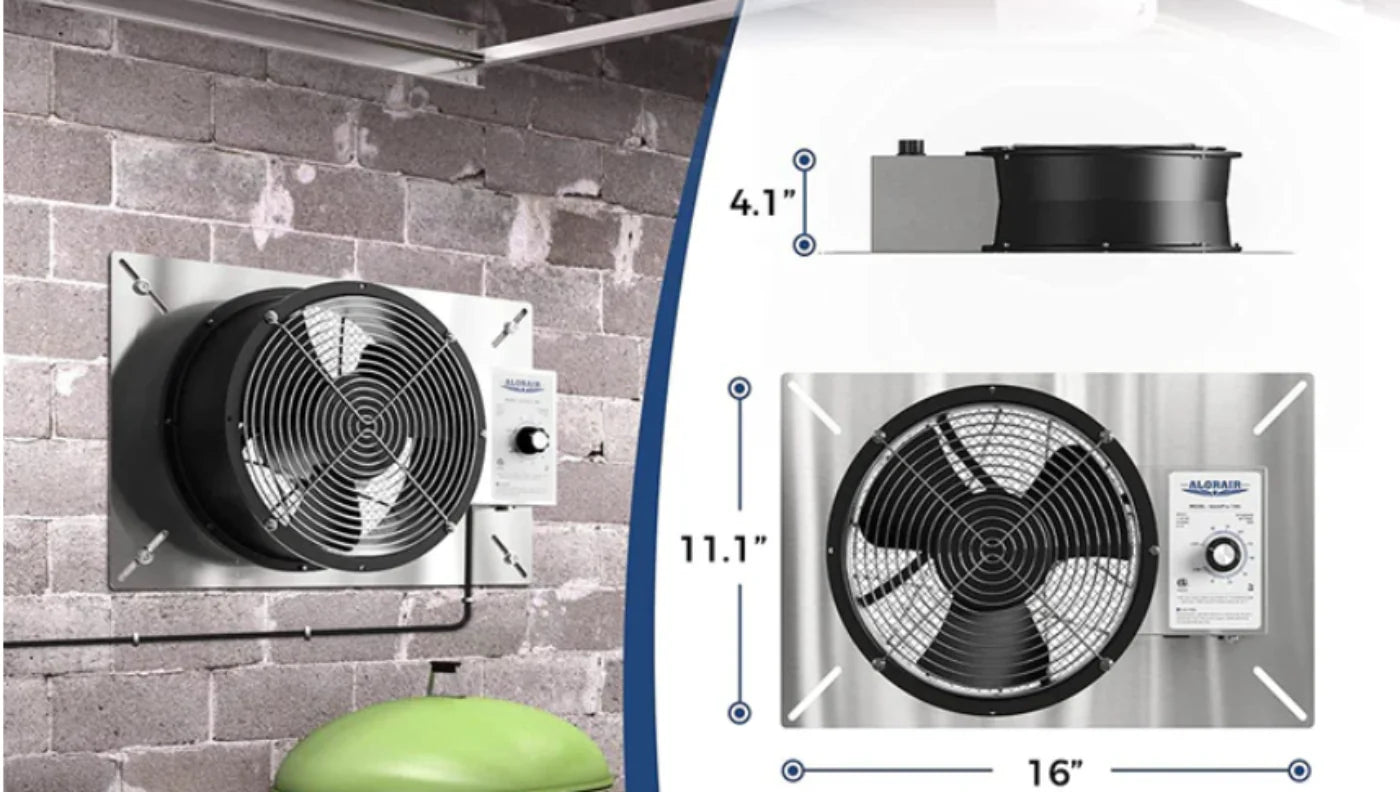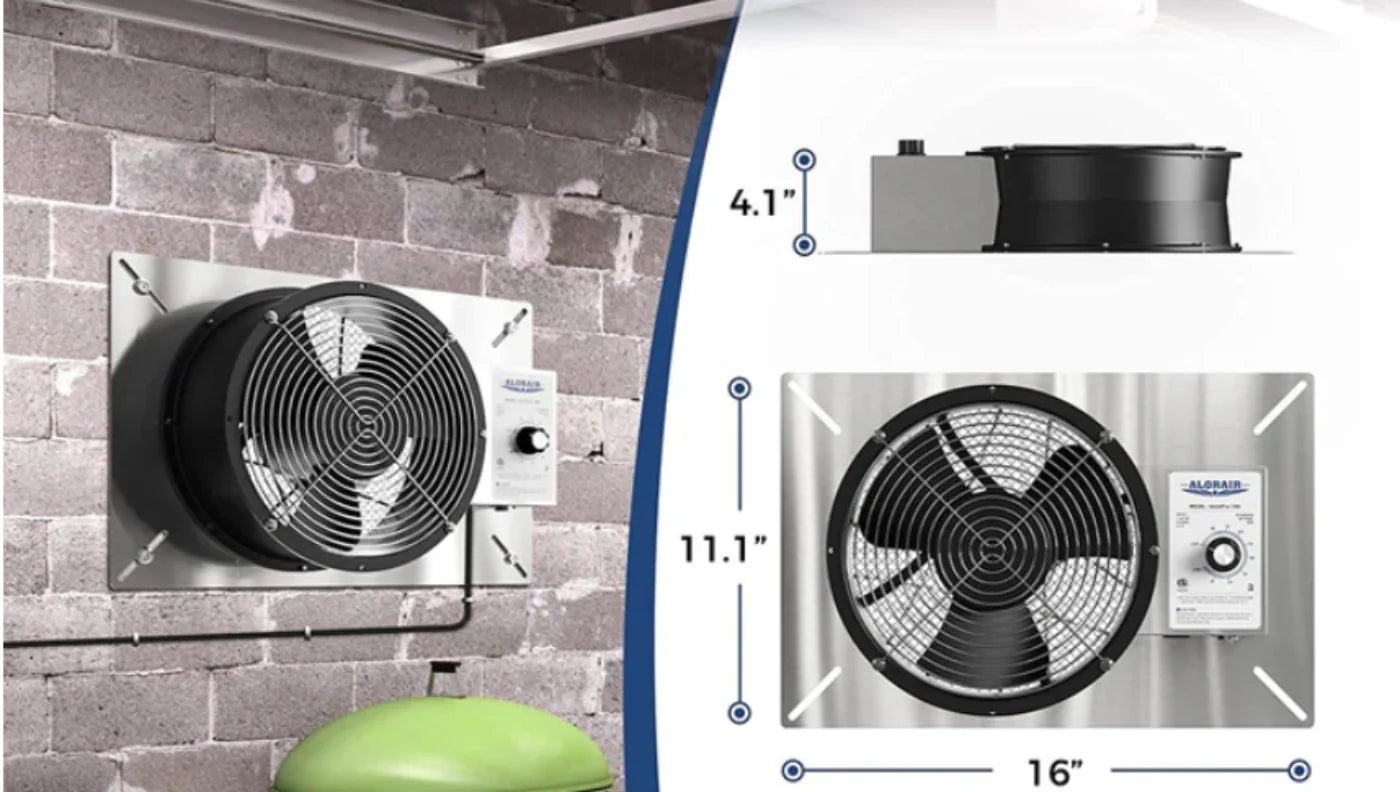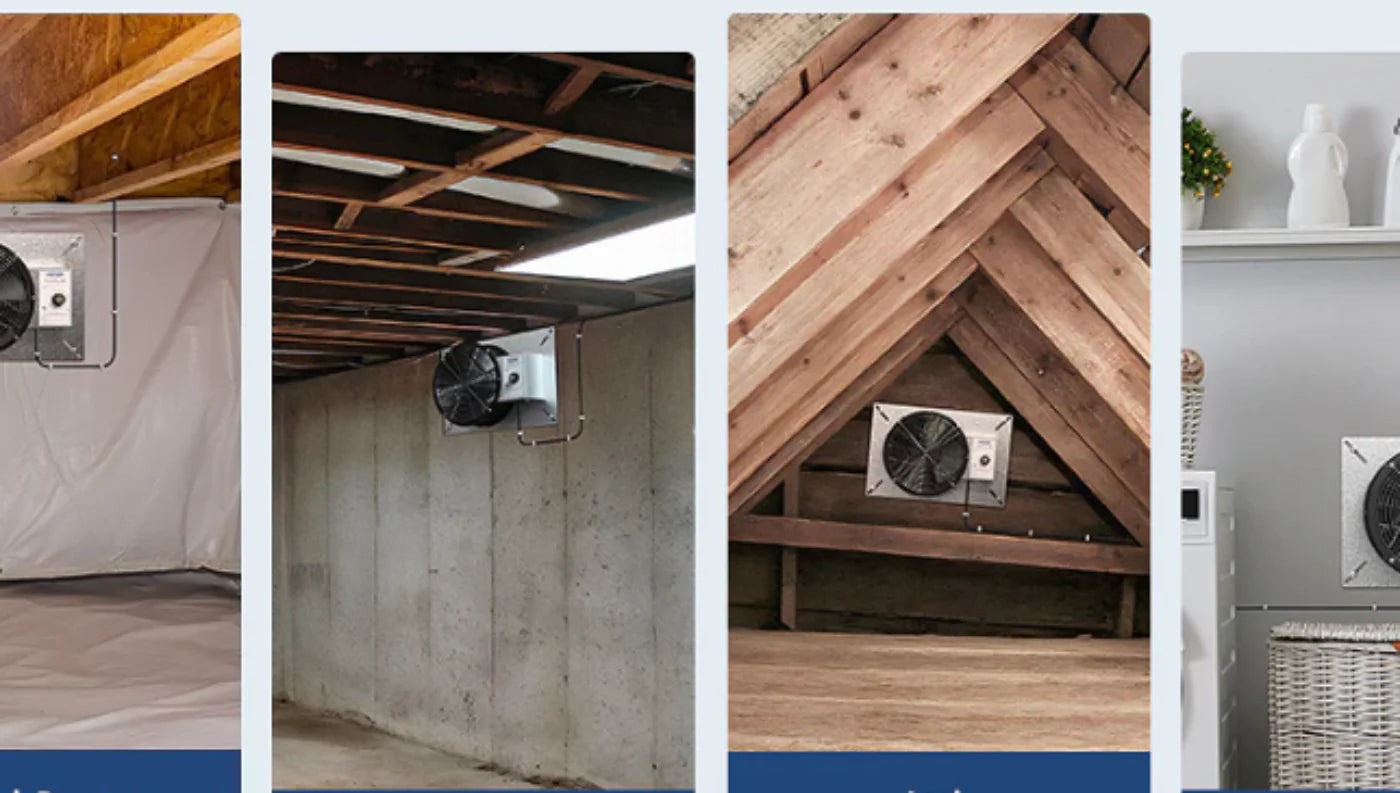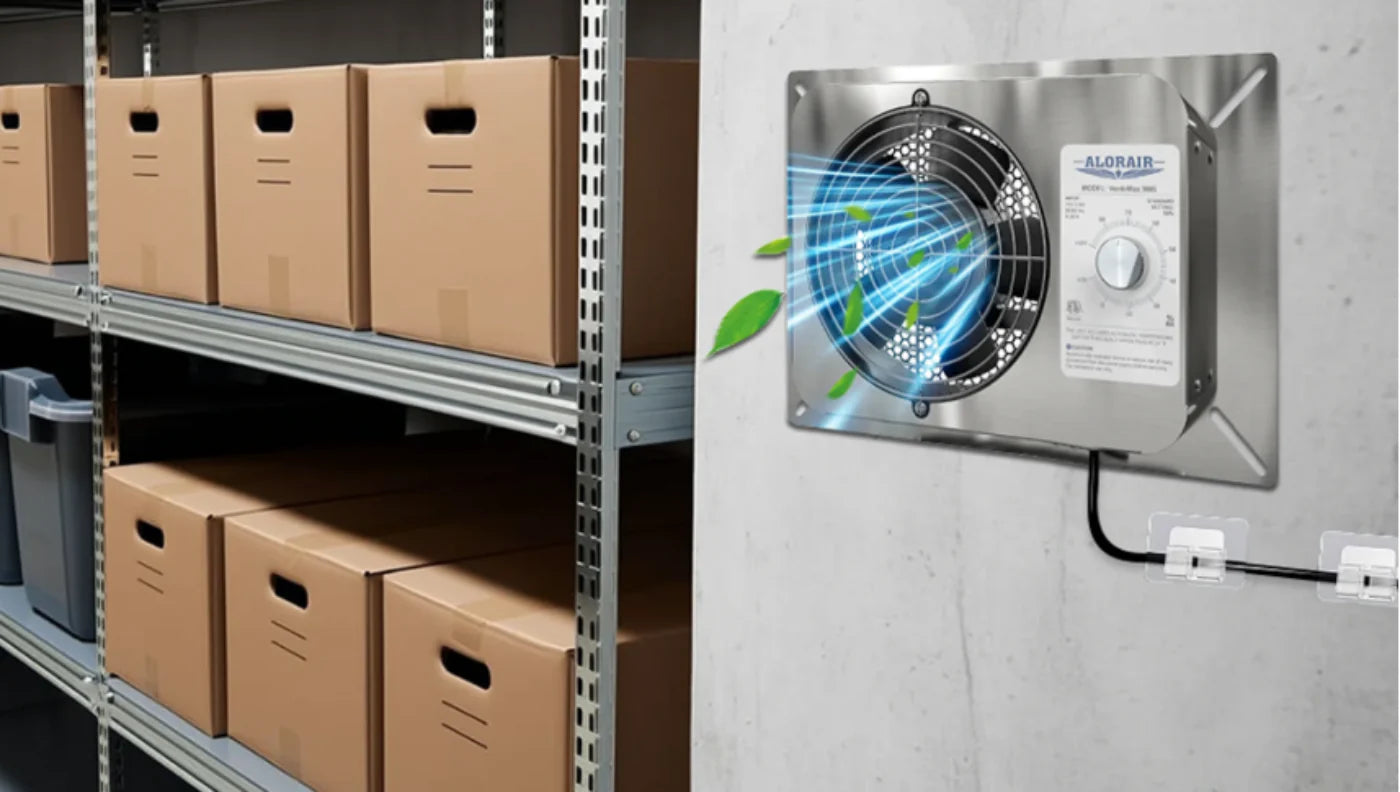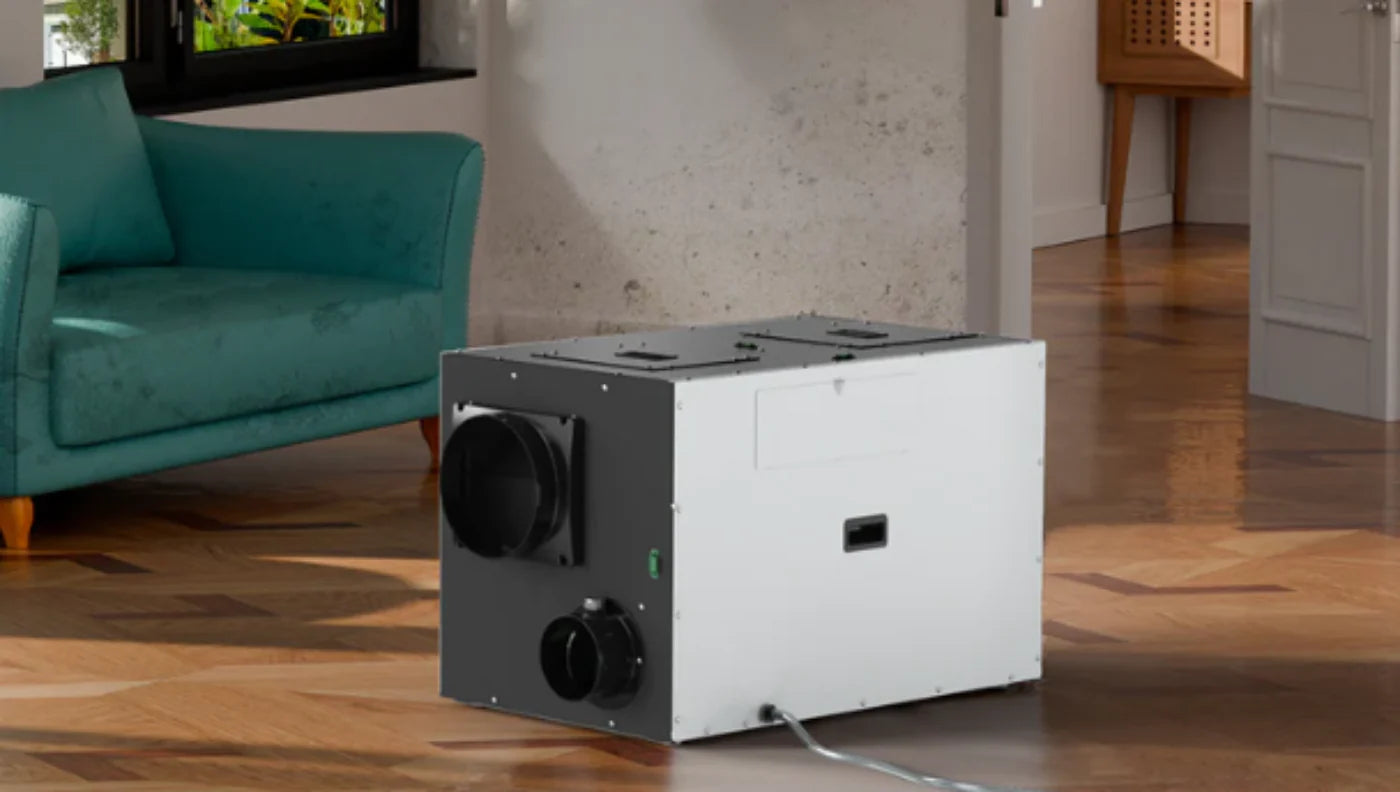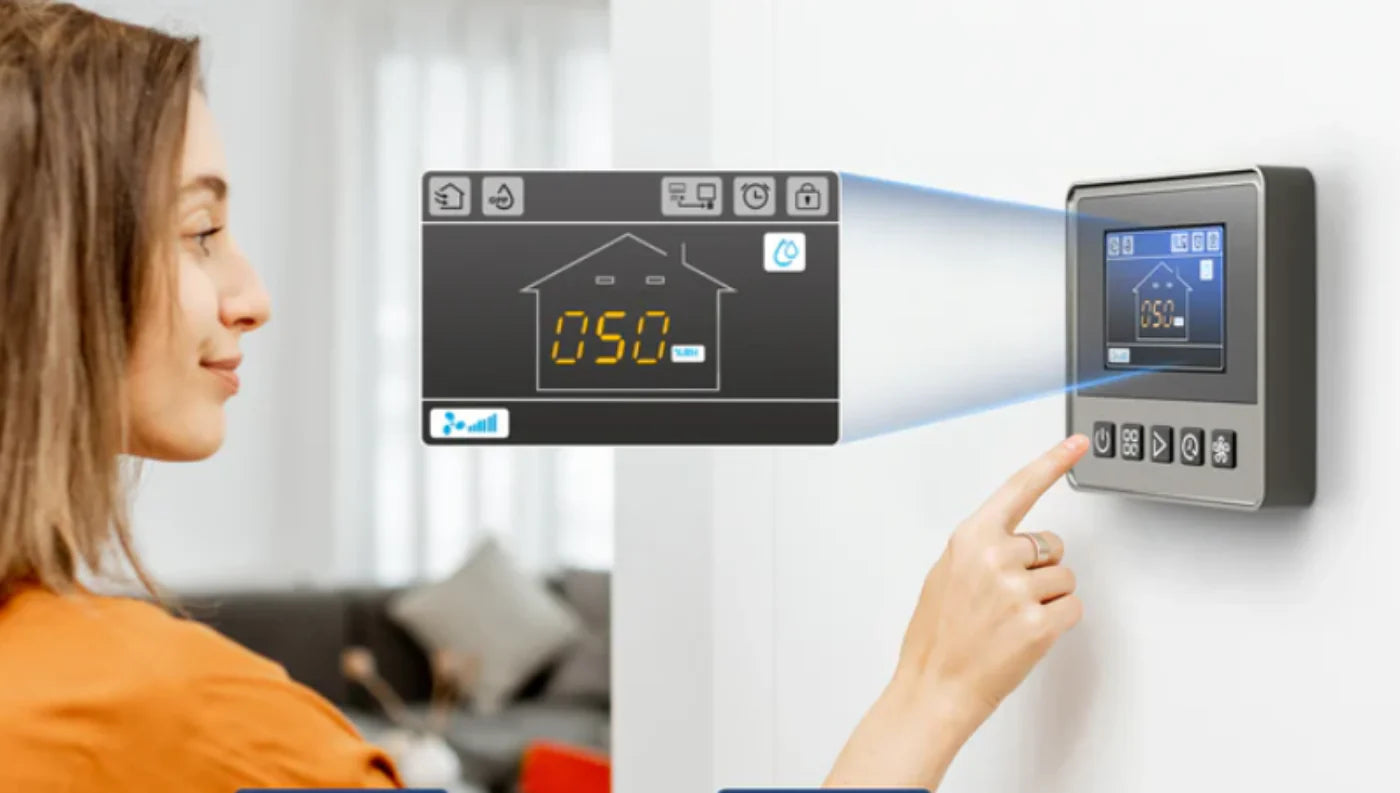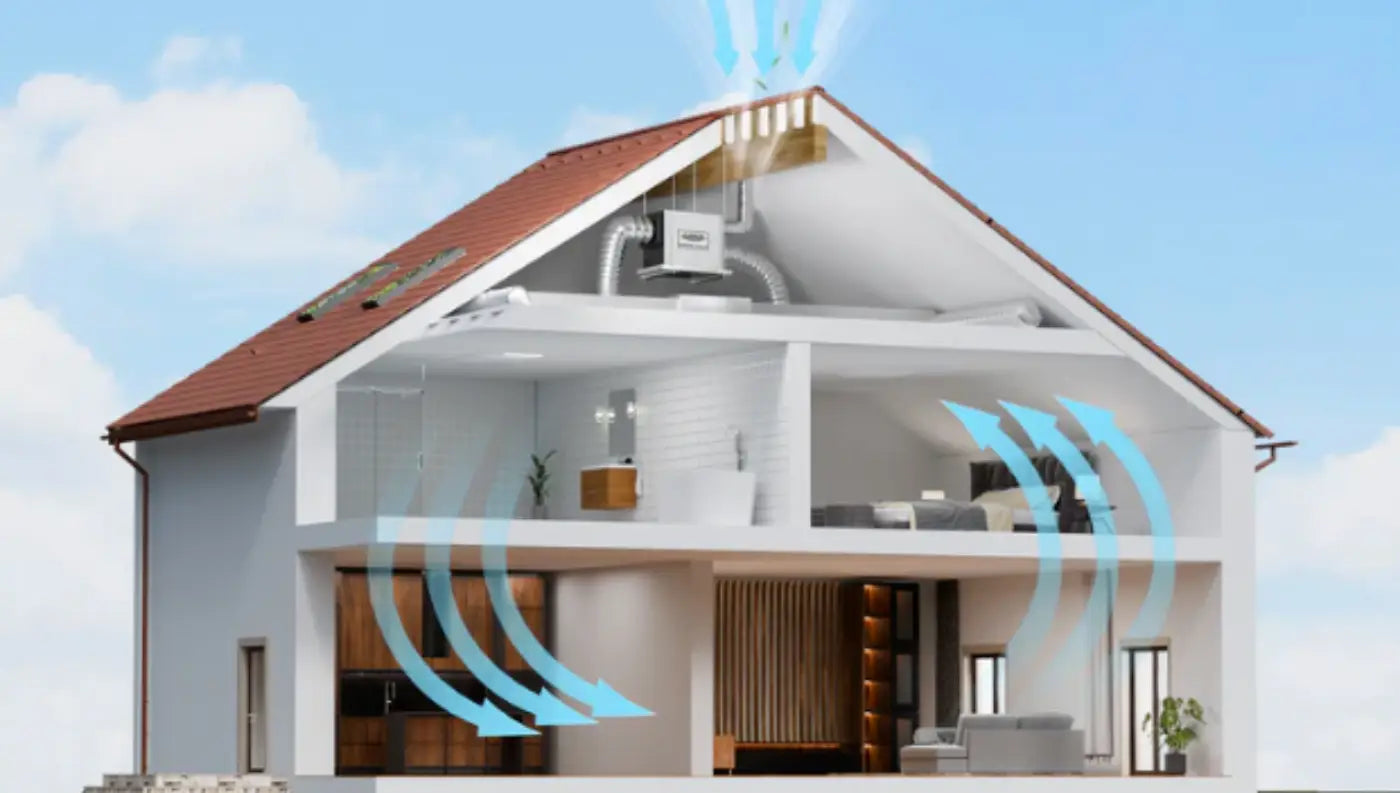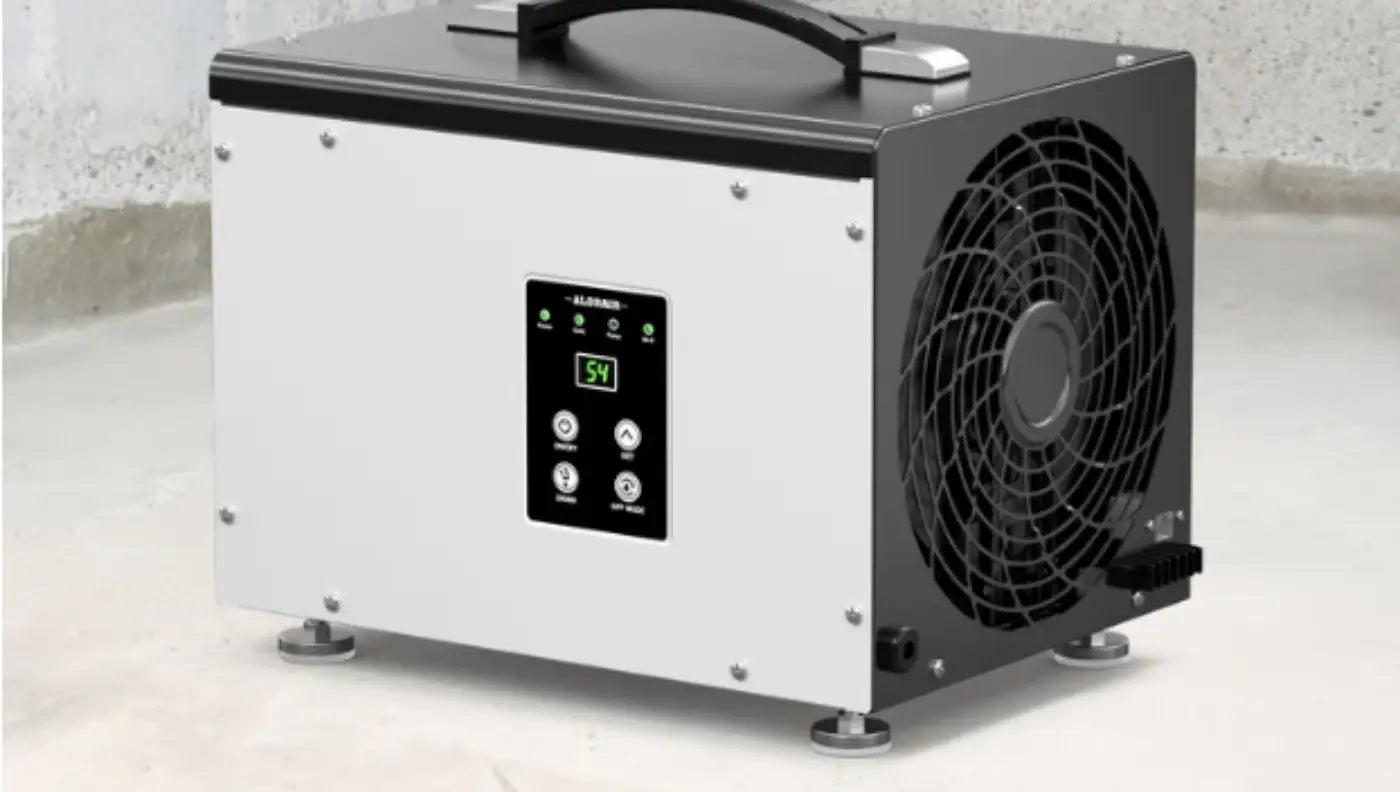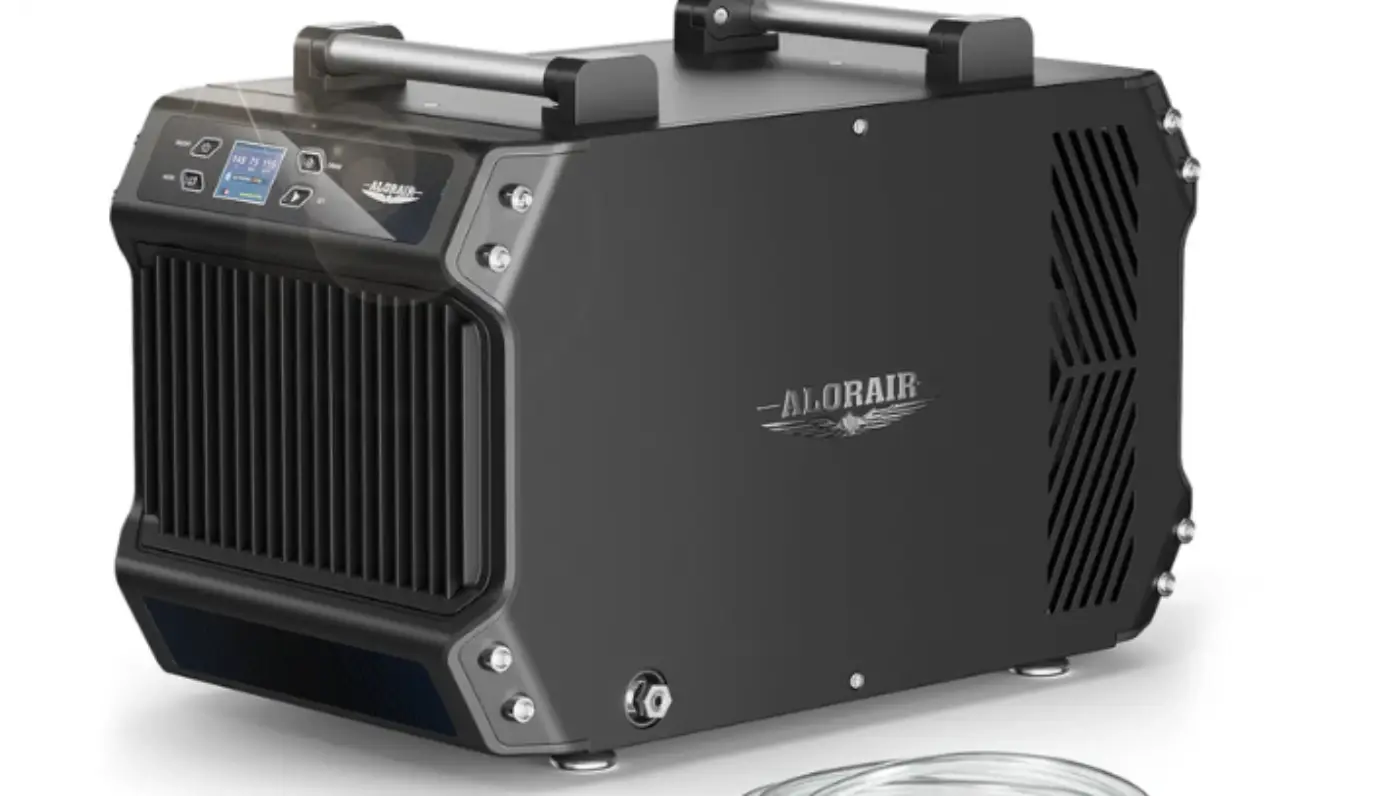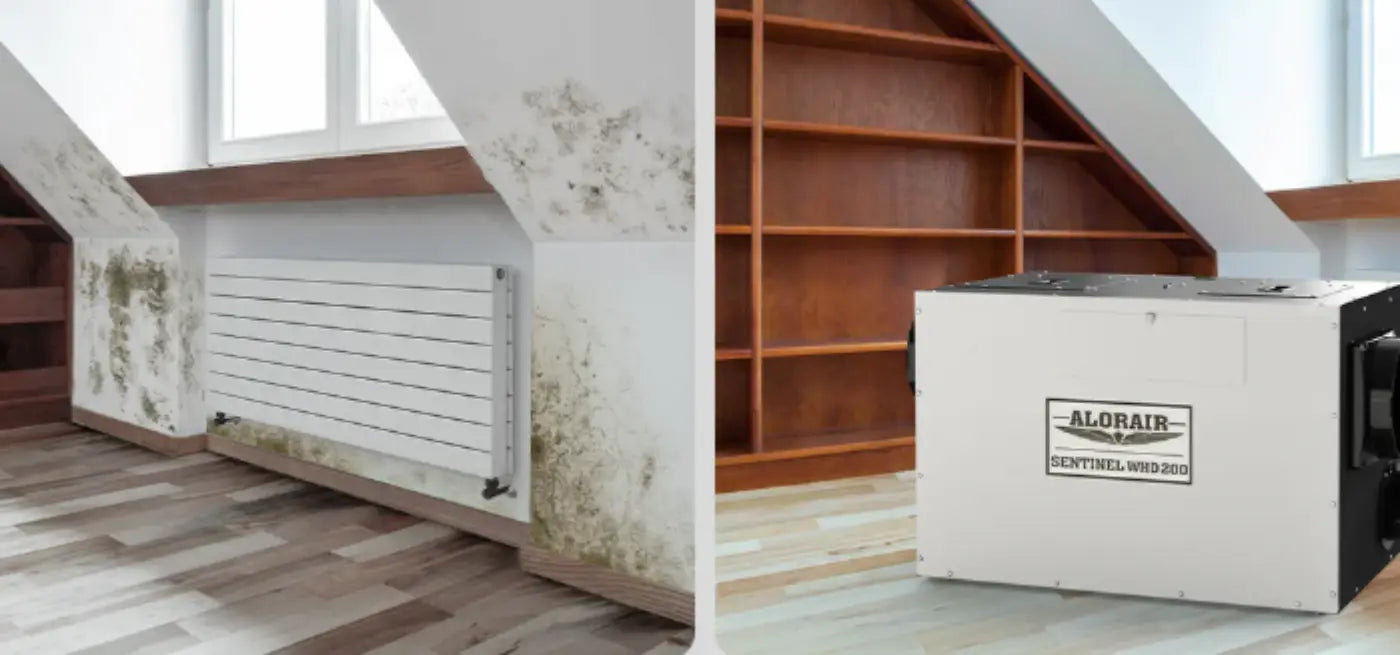High humidity can make your home feel sticky, smell musty, and even damage your property. If you’ve been fighting moisture with portable units or relying on your air conditioner alone, you might be wondering: is a whole house dehumidifier worth it?
In this guide, we’ll explain what a whole-house dehumidifier is, how it works, the pros and cons, and how climate plays a big role in deciding whether this upgrade makes sense for your home. We’ll also introduce AlorAir whole-house dehumidifiers, trusted by homeowners, contractors, and commercial facilities for reliable humidity control.
What Is a Whole-House Dehumidifier?
A whole-house dehumidifier is a powerful, ducted system that removes excess moisture from the air throughout your entire home. Unlike portable units that treat a single room, a whole-house system integrates with your HVAC ducts or operates as a standalone central unit.
Inside the dehumidifier, warm, humid indoor air passes over a cold coil. Water vapor condenses on the coil and drains away while the dry, conditioned air is returned to your home. The result is consistent 45–55% relative humidity (RH) in every room—something a standard air conditioner can’t always achieve.
How It Works with Your HVAC System

Most whole-house dehumidifiers connect directly to your existing ductwork. When humidity rises above your setpoint, the dehumidifier automatically switches on, independent of the AC cooling cycle.
This is key because your AC primarily lowers temperature; it only removes moisture when it runs long enough. In humid climates or during mild spring and fall days, your AC may not run often enough to control RH.
AlorAir models like the Sentinel WHD 200 feature multiple duct mounting options and even a fresh air damper to introduce outdoor air while keeping moisture under control. This gives you whole-home comfort without overworking your AC.
Cost of a Whole-House Dehumidifier
The cost varies by size of the unit, square footage of your home, and installation complexity. On average, a professionally installed system can range from $4,000 to $6,000 in many markets. DIY-friendly systems, such as AlorAir’s Sentinel series, often cost $1,200–$2,000 for the equipment, with optional professional installation if you prefer. Because AlorAir units are energy-efficient and designed for straightforward duct connections, many homeowners save significantly compared to HVAC-only options.
Pros of a Whole-House Dehumidifier

1. Consistent Comfort
Maintains a steady 45–55% RH across every room, reducing the clammy feeling even when temperatures are mild.
2. Healthier Indoor Air
Lower humidity inhibits mold growth, dust mites, and bacteria.
AlorAir units include built-in air filtration to capture allergens and protect indoor air quality.
3. Protects Your Home’s Structure
Prevents wood rot, cupping floors, blistering paint, and corrosion of HVAC equipment or stored valuables.
4. Energy Savings
Because drier air feels cooler, you can raise your thermostat a few degrees and save on cooling costs.
5. Low Maintenance
With automatic defrost, gravity drainage, and washable filters, AlorAir dehumidifiers require less upkeep than multiple portable units.
6. Fresh Air Options
AlorAir’s upgraded fresh air function allows controlled outdoor air intake for balanced ventilation.
Cons of a Whole-House Dehumidifier

Upfront Investment: Even with DIY-friendly units, the initial equipment cost is higher than a single portable dehumidifier.
Installation Space: You’ll need room in a basement, crawlspace, or mechanical area to house the unit and connect ductwork.
Power Use: Whole-house units consume more power than a small portable model, but energy-efficient designs—like AlorAir’s Sentinel WHD 200 with ±3% RH precision control—minimize operating costs.
Climate Matters: When a Whole-House Dehumidifier Shines
Hot & Humid (Southeast, Gulf Coast)
- Worth it: High humidity persists much of the year. AC alone rarely keeps RH below 60%.
- Recommendation: AlorAir Sentinel WHD 200 (165 PPD) for homes up to 4,500 sq. ft.
- Why: Handles extreme moisture while integrating with HVAC or working as a standalone system.
Coastal Climates
- Worth it: Salt air and damp breezes accelerate corrosion and mold.
- Recommendation: AlorAir Sentinel WHD 150 (140 PPD) or WHD 200 for large coastal homes.
- Benefit: Protects wood framing, electronics, and finishes from salt-laden moisture.
Moderate or Northern States
- Maybe: Humidity spikes in summer but winters are dry.
- Tip: Choose a unit with auto-defrost and variable fan speed to adjust for seasonal changes.
- Recommendation: AlorAir Sentinel WHD 100 (90 PPD) for homes up to 2,300 sq. ft.
Dry or Desert Regions
-
Not essential: If your indoor RH is consistently below 45%, you may not need a dehumidifier except in basements or during monsoon seasons.
AlorAir Whole-House Dehumidifiers at a Glance
|
Model |
Capacity (AHAM) |
Coverage |
Key Features |
|
Sentinel WHD 200 |
165 PPD |
Up to 4,500 sq.ft |
Fresh air damper, DIY ducting, auto defrost |
|
|
140 PPD |
Up to 3,500 sq.ft |
Multi-inlet/outlet options, gravity drainage |
|
Sentinel WHD 120 |
104 PPD |
Up to 3,000 sq.ft |
Compact footprint, energy-efficient |
|
Sentinel WHD 100 |
90 PPD |
Up to 2,300 sq.ft |
Ideal for small homes or condos |
- Energy-efficient compressors
- Automatic defrost for year-round operation
- 5-year limited warranty with U.S.-based support
- Free & fast shipping from AlorAirCrawlSpace
Whole-House vs. Portable Dehumidifiers
|
Feature |
Whole-House |
Portable |
|
Coverage |
Entire home |
Single room |
|
Maintenance |
Annual filter change |
Empty water bucket daily |
|
Energy Use |
Higher but more efficient per sq.ft |
Lower but multiple units needed |
|
Noise |
Remote installation = quieter |
Audible in living spaces |
|
Cost |
Higher upfront |
Lower upfront, higher total over time |
Bottom Line:
If you’re running multiple portable units, a whole-house system like the AlorAir Sentinel WHD 200 will eventually pay for itself in energy savings and convenience.
Who Should Invest in a Whole-House Dehumidifier?
- Persistent humidity above 55% RH even with AC running.
- Musty odors or visible mold in basements or crawlspaces.
- Cupping hardwood floors or peeling paint.
- Allergies or respiratory issues aggravated by damp air.
- High energy bills from running the AC to “dry out” your home.
Final Verdict: Is a Whole-House Dehumidifier Worth It?
For homeowners in humid or coastal climates, the answer is almost always yes. A whole-house dehumidifier protects your health, your home’s structure, and your wallet by preventing costly moisture damage and improving indoor comfort. Even in moderate climates, an AlorAir system provides peace of mind during muggy summers and “shoulder seasons” when your AC doesn’t run enough to manage humidity.




